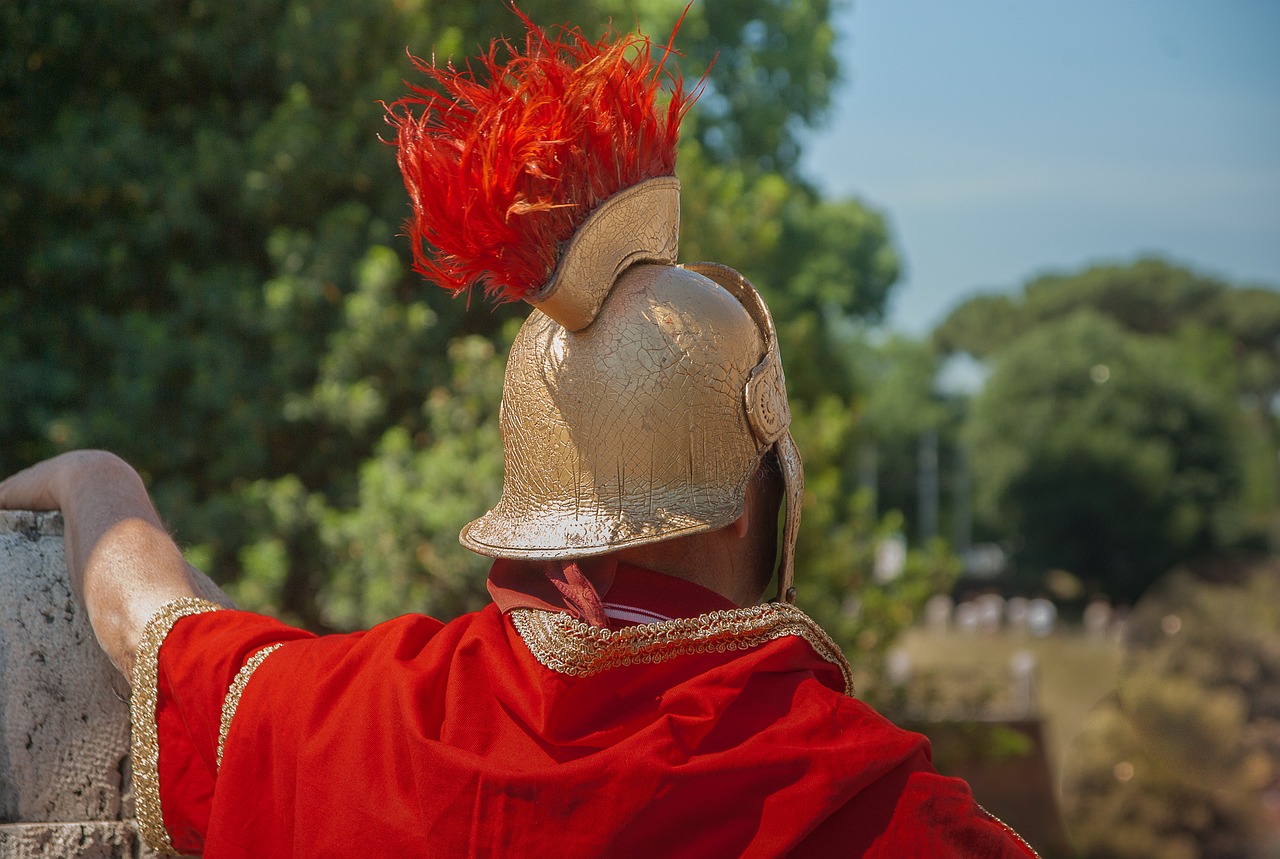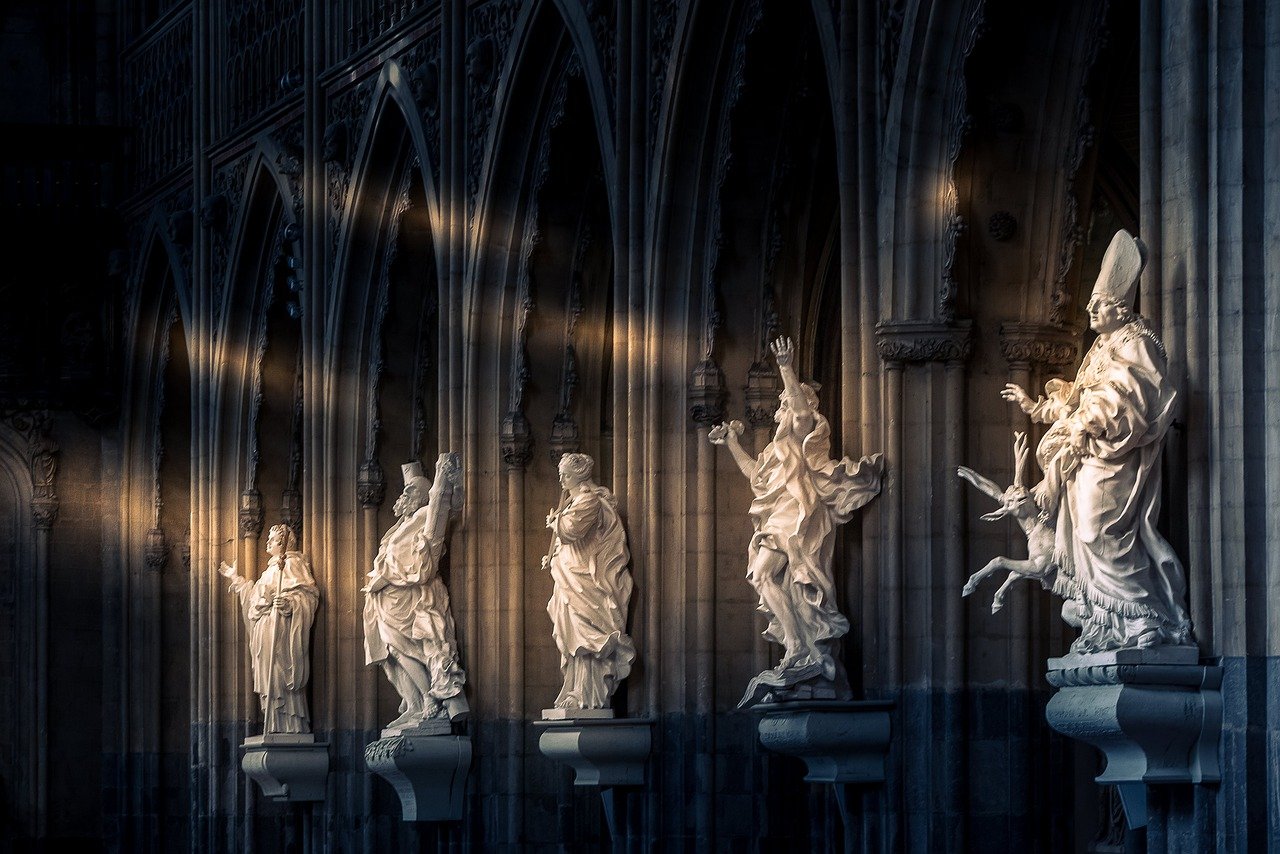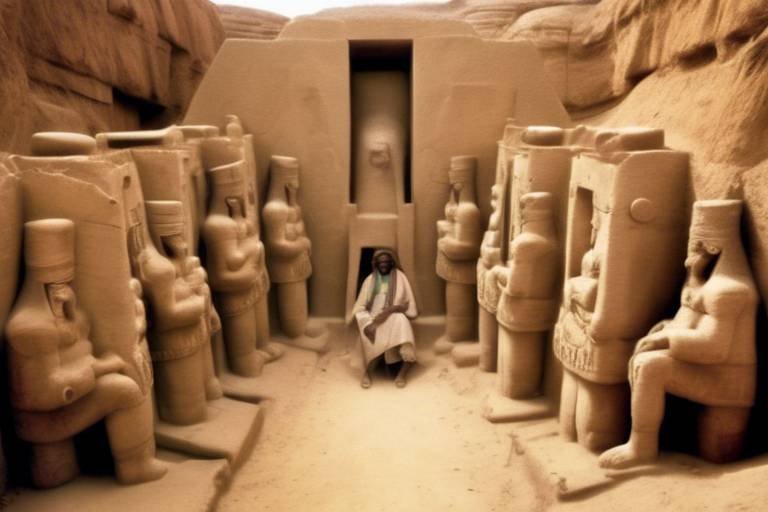The Secrets of the Ancient Civilizations' Architectural Techniques
Have you ever wondered about the secrets behind the architectural marvels of ancient civilizations? These ancient societies, with their ingenuity and innovation, created structures that continue to awe and inspire us to this day. Let's embark on a journey through time and explore the remarkable architectural techniques employed by civilizations such as the Egyptians, Greeks, Romans, Incas, Chinese, Mayans, Indus Valley, and Mesopotamians.
Each civilization left behind a unique legacy of architectural wonders, reflecting not only their engineering prowess but also their cultural values and beliefs. From the imposing Egyptian pyramids to the intricate Greek temples, from the strategic Roman aqueducts to the mystical Mayan pyramids, each structure tells a story of advanced knowledge and skill.
One cannot help but marvel at the precision engineering of the Egyptian pyramids, built with such accuracy that they still stand tall after millennia. The Greek temples, on the other hand, exemplify harmony and balance in their design, reflecting the ideals of beauty and proportion that defined ancient Greek architecture.
The Roman aqueducts stand as a testament to the engineering genius of the Roman Empire, showcasing their ability to harness water resources and channel them over vast distances. In contrast, the Incan Machu Picchu reveals a mastery of stone masonry and urban planning, nestled amidst the breathtaking Andean landscape.
Tracing the monumental construction of the Great Wall of China unveils the strategic vision of the ancient Chinese civilization, with its defensive features and labor-intensive construction techniques. The mathematical precision of the Mayan pyramids, aligned with astronomical phenomena, speaks to a deep understanding of celestial movements and cultural significance.
The Indus Valley Civilization surprises us with its advanced urban planning and sophisticated drainage systems, offering insights into one of the earliest urban societies. Lastly, the Mesopotamian ziggurats, with their stepped pyramid structures, provide a glimpse into the religious practices and architectural achievements of ancient Mesopotamia.
As we unravel the secrets of these ancient civilizations' architectural techniques, we gain a deeper appreciation for the creativity, innovation, and sheer brilliance of our ancestors. Their legacy continues to inspire and challenge us to push the boundaries of architectural design and construction in the modern world.

Egyptian Pyramids
The Egyptian pyramids stand as enduring symbols of ancient architectural mastery, captivating the world with their grandeur and precision engineering. These monumental structures, built by the ancient Egyptians, showcase a remarkable blend of artistry and engineering prowess. The construction of the pyramids required meticulous planning, innovative techniques, and immense labor, reflecting the cultural significance and advanced knowledge of the Egyptian civilization.
One of the most fascinating aspects of the Egyptian pyramids is the precision with which they were built. The alignment of the pyramids with the cardinal points of the compass demonstrates the ancient Egyptians' remarkable understanding of astronomy and geometry. The layout and orientation of the pyramids were not random but followed specific celestial alignments, emphasizing the connection between the earthly realm and the heavens.
To achieve such architectural precision, the ancient Egyptians utilized a variety of tools and techniques. The most well-known method involved the use of ramps to transport massive stone blocks and elevate them to great heights during construction. The precise fitting of these blocks, some weighing several tons, required meticulous planning and coordination among the labor force.
Moreover, the construction of the pyramids served not only as monumental tombs for the pharaohs but also as symbols of the divine authority and eternal life. The intricate hieroglyphic inscriptions and elaborate burial chambers within the pyramids reflected the religious beliefs and funerary practices of ancient Egypt, highlighting the spiritual significance of these architectural marvels.
Despite the passage of millennia, the Egyptian pyramids continue to intrigue and inspire awe, inviting us to marvel at the ingenuity and craftsmanship of the ancient builders. These enduring monuments stand as testaments to the enduring legacy of one of the world's greatest civilizations, beckoning us to unravel the mysteries of the past and appreciate the timeless beauty of ancient architecture.

Greek Temples
Greek temples stand as enduring symbols of ancient architectural mastery, embodying the artistic and engineering excellence of the Greek civilization. These magnificent structures were not merely places of worship but also testaments to the Greeks' profound understanding of geometry, proportion, and aesthetics.
The design of Greek temples was characterized by a harmonious blend of Doric, Ionic, and Corinthian architectural styles, each conveying a unique sense of grandeur and grace. The columns, with their fluted shafts and intricate capitals, supported the entablature and roof, creating a visual spectacle that captured the essence of Greek artistry.
One of the most remarkable features of Greek temples was the use of optical refinements to create an illusion of perfection. Through subtle curvature and slight inclinations, architects achieved a sense of balance and symmetry that transcended mere structural functionality, elevating the temples to the realm of divine beauty.
Furthermore, the intricate friezes and metopes adorning the exteriors of Greek temples depicted mythological narratives and historical events, serving as both decorative elements and cultural reflections of the Greek society's values and beliefs.
Moreover, the orientation of Greek temples towards celestial bodies such as the sun and stars reflected the Greeks' reverence for the cosmos and their belief in the interconnectedness of earthly and divine realms. This celestial alignment not only imbued the temples with spiritual significance but also demonstrated the Greeks' advanced knowledge of astronomy and mathematics.
In essence, Greek temples were architectural marvels that transcended mere stone and mortar, embodying the ideals and aspirations of a civilization that sought to create enduring monuments of beauty and meaning. Their legacy continues to inspire awe and admiration, inviting us to marvel at the ingenuity and creativity of the ancient Greeks.

Roman Aqueducts
Roman aqueducts stand as a testament to the ingenuity and engineering prowess of the ancient Romans. These remarkable structures were vital in supplying water to cities, allowing for the growth and prosperity of Roman civilization. The aqueducts were a marvel of hydraulic engineering, utilizing a combination of gravity and precise calculations to transport water over long distances.
One of the key features of Roman aqueducts was their use of arches and bridges to support the water channels. These architectural elements not only provided stability but also showcased the Romans' mastery of construction techniques. The aqueducts' design allowed for a continuous flow of water, ensuring a steady supply to public baths, fountains, and private residences.
Furthermore, the Roman aqueducts incorporated sophisticated filtration systems to ensure the purity of the water supply. By utilizing settling tanks and aqueduct maintenance practices, the Romans were able to deliver clean and safe water to their communities, a remarkable achievement considering the technological limitations of the time.
The construction of aqueducts required meticulous planning and skilled labor. Engineers and laborers worked together to survey the terrain, calculate gradients, and oversee the precise laying of the aqueduct channels. The scale of these projects was immense, with some aqueducts spanning hundreds of kilometers to reach their intended destinations.
Not only did the Roman aqueducts serve a practical purpose in supplying water, but they also symbolized the power and grandeur of the Roman Empire. The aqueducts became iconic structures that exemplified Roman engineering excellence and architectural innovation, leaving a lasting legacy that continues to inspire awe and admiration to this day.

Incan Machu Picchu
Perched high in the Andes Mountains of Peru, Machu Picchu stands as a testament to the architectural ingenuity of the Inca civilization. This ancient citadel, built in the 15th century, showcases the remarkable stone masonry and urban planning skills of the Incas, blending seamlessly with the natural landscape.
The construction of Machu Picchu involved precise fitting of massive stone blocks without the use of mortar, a technique known as ashlar masonry. The stones were carved and shaped with such precision that they fit together like pieces of a puzzle, creating sturdy structures that have withstood centuries of earthquakes and harsh weather conditions.
One of the most remarkable features of Machu Picchu is its sophisticated water management system. The Incas designed intricate channels and fountains to channel water throughout the site, showcasing their advanced understanding of hydrology and engineering. The agricultural terraces built into the mountainside demonstrate the Inca's mastery of adapting to the challenging terrain.
At the heart of Machu Picchu lies the Intihuatana stone, a sacred ritual stone believed to have astronomical alignments. This mysterious stone served as a sundial, indicating the solstices and equinoxes, highlighting the Inca's deep connection to celestial events and their advanced knowledge of astronomy.
The layout of Machu Picchu reflects the Inca's reverence for nature, with buildings and plazas positioned in harmony with the surrounding mountains and valleys. The strategic placement of temples, residential areas, and agricultural terraces showcases the Inca's spiritual beliefs and cultural practices.
Visiting Machu Picchu today offers a glimpse into the architectural brilliance and cultural legacy of the Inca civilization. As one wanders through the stone structures and winding pathways of this ancient citadel, the awe-inspiring beauty and historical significance of Machu Picchu continue to captivate visitors from around the world.

Chinese Great Wall
When it comes to monumental architectural achievements, the stands out as a testament to the ingenuity and perseverance of the ancient Chinese civilization. Stretching over thousands of miles, this iconic structure is a marvel of engineering and strategic design.
The construction of the Great Wall of China dates back to different dynasties, with each contributing to its expansion and fortification. The primary purpose of the wall was to protect the Chinese states and empires from invasions by nomadic tribes from the north, such as the Mongols and Xiongnu.
One of the remarkable features of the Great Wall is its strategic design, which includes watchtowers for surveillance, troop barracks for defense, and beacon towers for communication. The wall's defensive features were meticulously planned to provide early warnings of approaching enemies and facilitate rapid response.
Building such a massive structure required immense labor and resources. The ancient Chinese civilization employed various techniques, including manual labor, to transport and place the massive stone blocks that form the wall. The construction process was a monumental undertaking that involved thousands of workers over many centuries.
Moreover, the Great Wall of China is not a single continuous wall but a series of walls, fortifications, and natural barriers built across different regions of China. This network of defensive structures reflects the strategic thinking and military prowess of the ancient Chinese civilization.
Today, the Great Wall of China stands as a symbol of China's rich history and cultural heritage, attracting millions of visitors from around the world. Its grandeur and historical significance continue to awe and inspire people, showcasing the enduring legacy of one of the world's most iconic architectural wonders.

Mayan Pyramids
The Mayan pyramids stand as a testament to the advanced architectural knowledge and cultural significance of the Mayan civilization. These majestic structures, built with mathematical precision and aligned with astronomical phenomena, served both practical and ceremonial purposes. The Mayans' expertise in mathematics and astronomy is evident in the precise orientation of the pyramids towards celestial events, showcasing their deep connection to the cosmos.
Constructed using a combination of limestone, mortar, and intricate carving techniques, the Mayan pyramids were not only architectural marvels but also sacred sites where rituals and ceremonies were conducted. The intricate carvings and hieroglyphs adorning the pyramids depict the Mayan worldview, religious beliefs, and historical events, providing valuable insights into their culture and society.
The layout and design of the Mayan pyramids were intricately linked to their cosmological beliefs, with each structure serving a specific purpose within the larger architectural complex. The pyramids were often part of larger ceremonial centers, surrounded by plazas, ball courts, and other architectural elements that formed the heart of Mayan cities.
One of the most famous Mayan pyramids is the Pyramid of Kukulkan at Chichen Itza, known for its unique architectural features and astronomical alignments. The pyramid's design allows for a stunning visual display during the equinoxes when the sunlight creates the illusion of a serpent descending the steps, symbolizing the feathered serpent deity Kukulkan.
Despite the passage of time, the Mayan pyramids continue to captivate visitors with their intricate design, cultural significance, and architectural ingenuity. These ancient structures stand as a testament to the Mayan civilization's advanced knowledge, artistic achievements, and spiritual beliefs, offering a glimpse into a fascinating and enigmatic past.

Indus Valley Civilization Cities
The Indus Valley Civilization was renowned for its advanced urban planning and sophisticated cities that flourished along the banks of the Indus River. These ancient cities, such as Mohenjo-Daro and Harappa, showcased remarkable architectural innovations that reflected the organized and structured nature of this early civilization.
One of the most striking features of the Indus Valley Civilization cities was their meticulous layout and design. The streets were laid out in a grid-like pattern, intersecting at right angles, indicating a high level of urban planning and foresight. This systematic approach to city planning allowed for efficient movement of people and goods within the urban centers.
The houses in these cities were constructed using standardized bricks, showcasing a uniformity in architectural style and construction techniques. The presence of well-planned drainage systems and public baths further highlights the advanced level of infrastructure and civic amenities present in these ancient cities.
Moreover, the Indus Valley Civilization cities exhibited a remarkable level of social organization and governance. The presence of public buildings, marketplaces, and granaries suggests a well-structured society with a focus on trade, agriculture, and communal living. The intricate network of interconnected cities within the civilization also points to a complex system of governance and administration.
Overall, the cities of the Indus Valley Civilization stand as a testament to the ingenuity and foresight of one of the world's earliest urban societies. Their architectural achievements not only reflect a mastery of engineering and urban planning but also provide valuable insights into the social, economic, and cultural aspects of this ancient civilization.

Mesopotamian Ziggurats
Exploring the innovative and sophisticated methods used by ancient civilizations in constructing their architectural marvels, showcasing their engineering prowess and cultural significance.
Mesopotamian ziggurats stand as monumental structures that reflect the religious significance and architectural achievements of ancient Mesopotamia. These stepped pyramid temples were not merely architectural marvels but also served as sacred sites where rituals and ceremonies were conducted to honor deities and ensure the prosperity of the civilization.
The design of ziggurats was intricately linked to the religious beliefs of the Mesopotamians, with each tier representing a different aspect of their cosmology. The massive size of these structures, built with sun-dried bricks and featuring terraces that decreased in size as they ascended, symbolized the Mesopotamian people's attempt to reach the heavens and establish a connection with the divine.
Moreover, ziggurats were not standalone buildings but were part of larger temple complexes, demonstrating the interconnectedness of religious, social, and political aspects of Mesopotamian society. The ziggurat at Ur, for example, dedicated to the moon god Nanna, was a focal point of the city and a symbol of the power and authority of the ruling elite.
The construction of ziggurats required meticulous planning and coordination, with thousands of laborers working under the direction of skilled architects and engineers. The use of ramps, pulleys, and other innovative techniques enabled the Mesopotamians to build these imposing structures that have endured the test of time and continue to fascinate archaeologists and historians.
Overall, Mesopotamian ziggurats not only showcase the architectural prowess of ancient civilizations but also offer valuable insights into the religious beliefs, social organization, and technological advancements of one of the earliest urban societies in human history.
Frequently Asked Questions
- What architectural techniques were used by ancient civilizations?
Ancient civilizations employed a variety of innovative architectural techniques such as precise stone masonry, advanced engineering principles, and strategic urban planning to construct their monumental structures.
- How were the Egyptian pyramids built?
The Egyptian pyramids were built using sophisticated engineering methods that involved precise measurements, intricate stone-cutting techniques, and a skilled labor force to create the iconic structures that have stood the test of time.
- What made Greek temples architecturally significant?
Greek temples were renowned for their architectural brilliance, characterized by their harmonious proportions, intricate column designs, and decorative sculptures that reflected the cultural and artistic achievements of ancient Greece.
- What was the purpose of Roman aqueducts?
Roman aqueducts were designed to transport water from distant sources to urban centers, showcasing the engineering prowess of the Romans in creating efficient water supply systems that supported their growing cities and public baths.
- How did the Inca civilization build Machu Picchu?
The Inca civilization utilized advanced stone masonry techniques and precise urban planning to construct Machu Picchu, a remarkable mountain citadel that exemplifies their architectural ingenuity and reverence for the natural landscape.
- What defensive features were incorporated into the Chinese Great Wall?
The Great Wall of China included strategic defensive features such as watchtowers, beacon towers, and fortified passes to protect against invasions and secure the northern borders of the ancient Chinese empire.
- What mathematical principles influenced the design of Mayan pyramids?
Mayan pyramids were built with precise mathematical calculations that aligned with astronomical phenomena, reflecting the Mayan civilization's advanced knowledge of mathematics, astronomy, and religious beliefs.
- How did the Indus Valley Civilization manage their urban infrastructure?
The Indus Valley Civilization developed sophisticated urban planning with well-organized cities, advanced drainage systems, and efficient water management, demonstrating their architectural innovations and societal organization.
- What was the religious significance of Mesopotamian ziggurats?
Mesopotamian ziggurats served as religious centers dedicated to various deities, featuring stepped pyramid structures that symbolized the connection between heaven and earth in the ancient Mesopotamian belief system.



















